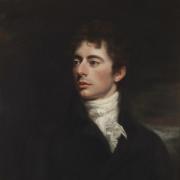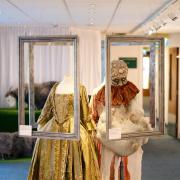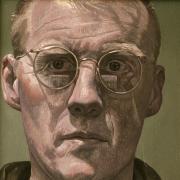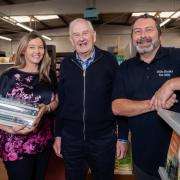As the Brampton Road arts campus of the University of Cumbria in Carlisle marks its 60th anniversary, Karen Jones, development manager at the Institute of Education, Arts & Society, looks back over its history and development
The origins and how we came to be on Brampton Road date back some 200 years when, in 1822, a Society for the Encouragement of Fine Art was formed in Carlisle. The aim was to have an annual exhibition of the work of living artists and to teach potential Cumbrian artists.
A year later, Paul Nixson, a sculptor and architect, designed and built an Academy of Arts on Finkle Street, at his own expense, to house the society. This continued for several years until Messrs Nixson and Denton, the owners of the academy, were declared bankrupt and the building became the studio of John Kirkbride, their foreman sculptor, who took over the business.

When the Athenaeum was built in Lowther Street in 1840 and the Mechanics Institute moved in, it was hoped that a design school would be established there. Art lessons were given at the institute by WH Nutter and continued after it moved to Fisher Street, but it was not considered to be a proper art school.
The School of Art came about in 1854 and soon started to flourish. When Tullie House was purchased for a museum and library in 1890, it was decided there would also be room for a School of Science and Art. In January 1894 the Carlisle Journal announced that the School of Art was moving from Fisher Street to Tullie House.
After the Second World War, with no room for expansion on the Tullie House site, it was agreed that the School of Art and a Technical College should be in new locations. For the college, this was a purpose-built structure in Strand Road, where it remains today as Carlisle College.

Upon the retirement of Colin Rae, Harold Shelton became principal in 1947 and student numbers rose to 60, the increase fuelled by returning servicemen and women seeking new beginnings and new careers.
In 1950, the Carlisle School of Art moved to Homeacres on the 11-acre site at Brampton Road. It cost £8,000 to buy the building and a further £2,000 for its conversion (about £450,000 today).
When Jonathan Dodgson Carr came to Carlisle in 1831, he lived in Castle Street, opposite the cathedral. Professional success meant he could invest “considerable sums in a tin mining venture in Cornwall”, according to the in-house magazine of Carr’s Biscuit Works, Topper Off. The magazine confirmed “at the time he had just completed the house now called Home Acres in Stanwix”. Carr had bought more land than necessary and was able to offer “24 valuable building sites near Tarraby, likely to attract go-ahead citizens who are fond of rural life”.
As a Quaker, Carr refused to pay tithes on his Stanwix land and in 1848 had a silver teapot and the previous year six teaspoons seized from his house by bailiffs acting for the vicar.
The tin mine crashed in 1853 and everyone who had backed it lost their money. This resulted in Carr selling “the beautiful home, in which he had spent only seven years, for £5,900”, the money going towards recompensing the other 50 tin mine investors. The Topper Off said: “Carr met not only his own debts but paid back to his friends all they had lost following his advice.” A sale notice in December 1853 describes the “newly erected house called Edenside and 28 acres”.
Birmingham-born banker Hubert Rawson bought it and changed the name to The Villa by 1858. After he died in 1870 his video left. The next resident was Joseph Ferguson, who died at The Villa in 1881.
Carr’s son Henry then reclaimed the property for his family. When Henry died in 1904 the house was changed back to the original Edenside by its new owners, his sons Laurence and Frank.
The Carlisle Directory lists James and Jocelyn Morton as moving in in 1908. In his book, Three Generations in a Family Textile Firm, Jocelyn Morton describes Home Acres as: “A spacious early Victorian house, looking south-east over the River Eden to the Pennines beyond, in grounds with mature beech and chestnut trees, fields and stabling a small farm building for horses and the family cow.”
There was also “a walled garden and ample lawns for entertaining, for holding fetes in aid of the Liberal cause, for lawn tennis and croquet and for playing with the family”.
James Morton had a new family house by 1924 and Home Acres was acquired by Frederick Selby Chance, of Ferguson Brothers. He died there in 1946 after which there was controversy over the future of the building.
An Augustinian order was anxious to set up a Catholic Grammar School of Boys in Carlisle and had their eye on the house. The history of Austin Friars School says: “An agreement to purchase was made on July 20 and on the very same day in 1949 Carlisle Corporation placed a compulsory purchase order on the house.”
As a result, a public inquiry was held in 1950 and the “compulsory purchase order on Home Acres was upheld by the Ministry of Education”, for use as the College of Art. There were now 70 students attending full-time courses, women’s crafts and evening classes and Home Acres soon proved to be too small as the college attracted more students.
Trade printing courses remained at Tullie House but by 1954 the city surveyor was advising against the introduction of further heavy equipment on the upper floors of the building. When the Naafi building in Rickergate ceased to be used by the Services, it was acquired by the city for the art college and adapted ready for the 1954-55 session. Programmes on offer included drawing, painting and textile design, typography, letterpress machine work, photo-lithography, painting and decorating, sign writing, coach spraying, pottery, cabinet making, cake decoration, ballet dancing and the art department of the Carlisle Grammar School.

Harold Shelton retired in April 1957 and the new campus build was led by Alan Tenant Moon (or Tenant Moon as he was known) who was principal for more than 20 years until he retired in 1979.
In 1959, The Cumberland News announced that the city had approved plans for the expansion of the College of Art, and it was hoped that the Minister of Education would approve these in his next building programme. Work was to cost £104,000 with a new building on Brampton Road (just short of £3m today).
Outbuildings which had formerly been the Stanwix Reformatory for Boys had already been converted into wood and metalwork, ceramics and print workshops and with the use of the Naafi building, student numbers had risen to 145. With the new building, this would increase to 300.
The new campus covered a site of around 1.75-acres and was built in two-stages. In the complete scheme the buildings were to be arranged around an internal rectangular court.
Two parallel three-storey blocks were joined at the south-western end by a hall-theatre, and at the north-eastern end by a single-storey workshop block. Externally, Jacobean hand-made facing bricks were used and Lakeland stone introduced at the end of the workshop block.
Phase one was opened by the president of the Royal Academy of Arts, Sir Charles Wheeler on October 9, 1963. Phase two was opened in 1967 by the then Minister for Education and Science, Shirley Williams.
Numbers continued to grow along with demand for short courses. In 1968, the City Council leased Stanwix House to the college and launched the School of Extra-Mural Studies.
In the late 1950s, courses included a two-year Intermediate Certificate of Art and Craft, followed by two years’ study for the National Diploma in Design. In addition, there was a two-year course for students wishing to enter a School of Architecture.
There were close links with local trade and industry and several firms loaned and gave equipment. Contacts were established with local fabric printing firms like Stead McAlpine and these had an increasingly important role in the development of the college.
In the 1960s a Pre-Diploma Course was introduced for those wishing to enter a Diploma in Art and Design course elsewhere, as these new degree level equivalent courses were not approved for delivery in Carlisle.
New courses were introduced at this time, including the Licentiateship of the Society of Industrial Artists and Designers qualification in Graphic Design. The 1960s also saw the first discussions about the possibility of developing a university in Carlisle.
In 1974, under the reorganisation of Local Government, control of the Carlisle College of Art was ceded to the new Cumbria Local Education Authority and the College became the Carlisle, then Cumbria, College of Art and Design.
Adrian Turner joined the College in 1977 and became principal in January 1979 upon the retirement of Tenant Moon.
The late 1970s was a period of austerity in education and there were constraints on development at both national and local levels. Enrolments fell and part-time students outnumbered full-time, causing financial imbalances at the college.

Peter Harman took up his post as director of studies and vice principal in 1979 and approved a substantial increase in funding for the textile department was made which ultimately led to the formation of the design crafts course, later to become contemporary applied arts.
Changing technologies and industrial requirements led to an increased need for accommodation and staffing. The college’s new annexe at Stanwix House was refurbished and the listed building became part of the teaching space.
The development of the Stanwix Theatre was built into Carlisle City’s Arts Strategy, which brought in Arts Council funding and a programme of professional and community events was established running well into the early 2000s.
In the late 1980s a ceramics studio was developed in a cottage next to the ceramics workshop after resident caretaker Tom Orr moved elsewhere. All the rooms in the studio were labelled ‘T’ after Tom. Around the same time outline proposals were agreed for a halls of residence within the walled garden.
Further education work and apprenticeships dominated the curriculum, but gradually new higher education courses were developed. Approval to offer BTEC, HND and National Diplomas opened new opportunities in Carlisle for the delivery of nationally recognised qualifications and the national recruitment of students.

In 1985 research started on the introduction of computers into the college and the creation of the TV and video unit (TVEI) promoted links with schools and the introduction of video editing. A partnership with Border Television helped with the acquisition of equipment. Staff member Duncan McLaren ran courses for staff at the Cumberland News – in return it printed the college newspaper.
By 1989-90 student numbers had grown to 500 which, together with projected growth, prompted a search for additional accommodation.
An agreement made by Cumbria County Council with the University of Central Lancashire (UCLan) for the development of higher education in Cumbria led to a long-lasting and fruitful developmental relationship between the two centres. The first HE course was a Diploma in Higher Education (Dip HE) in fine art in the early 1990s. It was the first in the validation of almost 100 new degree courses at the college in the next 15 years.
In March 1991, Adrian Turner retired and David Vaughan was appointed principal.

Adrian and vice principal Peter Harman were pivotal to the developments of the previous two decades. Their corporate vision, ability to deal with constant change, investment in the quality of teaching and learning, together with robust financial controls took Brampton Road from a small FE college to a vital high quality higher education institution with the resources and staffing to match.
The Further and Education Act of 1992 brought about the Incorporation of Colleges on April 1, 1993. This brought pressures to reduce costs but at the same time increase student numbers together with rationalisation and national standardisation of qualifications. The college applied for transfer to higher education status and in 1997 became a Higher Education Institution following an Order of Parliament, with 1,250 undergraduate and postgraduate students.
In 1995, the new Halls of Residence provided 113 study-bedrooms for new students.
A new library development was officially opened in January of the new millennium. This included a modern library and research facility (now the graphic design and illustration studio) together with some of the best ict, media, digital photographic animation and reprographic facilities in the county. All of these were supported by a high-speed computer network which linked the College campuses and gave internet access to all students and staff for the first time.

A new Schools structure was introduced in 1996 with the College being divided into three academic schools: the Schools of Fine and Applied Arts, Communication and Media, and Critical and Contextual Studies.
New honours degree courses in journalism, editorial photography and media production were all validated in July 1999 and in September 2000 a degree course in performing arts began.
The college held its first awards ceremony in Carlisle Cathedral in November 1994.
In 2002 the college introduced the title of honorary fellow with Adrian Turner and Peter Harman receiving the first awards. In following years the title was awarded to, among others, broadcasters Eric Robson and Eric Wallace, artist Conrad Atkinson and art teacher Mary Burkett.
In April 2002 the college changed its name to Cumbria Institute of the Arts recognising that it was now a major provider of courses in digital media and performing arts as well as the established visual arts programmes.

A period of great change and opportunity followed with investment in staff and resources. The institute formed profitable partnerships with a number of overseas universities and specialist institutions to undertake joint ventures in research and implement staff and student exchange programmes. Its international reputation was enhanced to such a degree that up to ten per cent of its enrolments came from overseas which considerably enriched the experience of all who were associated with the ‘art college’ in Carlisle.
In 2007 a new chapter in the history of the art college began with the establishment of the Faculty of the Arts in the University of Cumbria.

Our curriculum offer has had to adapt significantly over the last decade to reflect changing markets and technological advancements. Our partnerships help to influence the shape of our courses and enable our students to take on real-world, innovative project briefs. Students of today will be entering careers that did not exist even 20 years ago, yet alone 60 years ago.
The arts is a major provider of cultural activity in Carlisle and across Cumbria with staff, students and graduates creating many of the exhibitions and performances that are helping to establish the area as a vibrant cultural place for residents and visitors.
The Institute still is a key provider of advice, research, support and training for a range of creative and cultural industries across the North West and, increasingly, internationally.
The University of Cumbria is the legacy of all those talented people in Carlisle who have worked to make the institute what it has become today.
• The Institute of Education, Arts & Society is appealing for stories, memories and photographs for a new website tracing the history of arts education in Carlisle. Contact karen.jones@cumbria.ac.uk
• With thanks to local historian Denis Perriam.

EMINENT ALUMNI AND STAFF
Donald Wilkinson was born in Keswick. He attended Carlisle College of Art 1953-7 and the Royal College of Art 1959-62. In 1980 he moved back to Cumbria where he set up an etching studio. Donald was a close friend of Winifred Nicholson (who was a college governor in the 1960s), holidaying with her in the Hebrides. He has gained an international reputation for his etchings and landscape drawings, winning numerous awards and exhibiting widely.
Sheila Fell (1931-1979) left Cumbria in 1949 after attending Carlisle College of Art. She began exhibiting at the Royal Academy in 1965 and was elected a Royal Academician in 1974.
Conrad Atkinson (1940-2022) was born in Cumbria and gained an NDD from the Carlisle College of Art and Design in 1961. He received international recognition for his innovative art and had numerous solo and international exhibitions. He was professor of fine art at the University of California and was made an honorary fellow of the Cumbria Institute of the Arts in 2006.
Jack Seabury (1922-2000) attended the Royal College of Art from 1949-1952 and taught at the Carlisle College of Art from 1956 until his retirement in 1985.
Colin Allen (1926-1987) was born in Cardiff and attended the Royal College of Art from 1949-52. He moved to Carlisle in 1953 and was a member of the teaching staff of Carlisle College of Art for 28 years where, during the 1950s and 1960s, he helped many students progress to the Royal College of Art. Colin represented the RCA in the World Cultural Exhibition of 1953 and showed regularly at the Welsh Arts Council, Royal Academy and Scottish Academy.
Helen Skelton, broadcaster, television presenter, author and Strictly Come Dancing finalist.
Mally Chung, film industry location manager who brought Star Wars to Cumbria.
WHAT’S IN A NAME?
There have been name changes and an increasing diversity of the subjects taught. But the aims have remained the same as when it started. We have created a community, a place of belonging and courses that are designed to take students to their creative limits enabling them to graduate with the confidence, experience and skills that are sought after by employers in an exciting industry.
Academy of Arts 1823-1853
Carlisle School of Art 1854-1953
Carlisle College of Art 1954-58
City of Carlisle College of Art 1958-59
College of Art Carlisle 1959-66
Carlisle College of Art & Design 1966-77
Cumbria College of Art & Design 1977-2002
Cumbria Institute of the Arts 2002-2008
University of Cumbria | Institute of Arts 2008-2023
University of Cumbria | Institute of Education, Arts & Society 2023-present




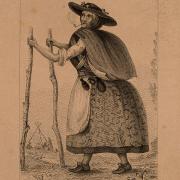

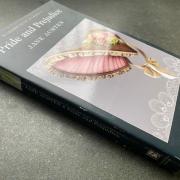

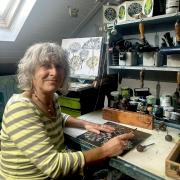

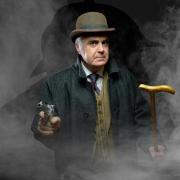
![Julie Carter [Jessie Leong]](/resources/images/128x89/1x/18534684.jpg)
![Julie Carter [Jessie Leong]](/resources/images/180x180/1x/18534684.jpg)

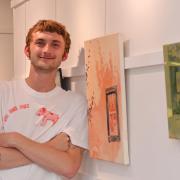


![Eastman Johnson's The Lord is My Shepherd, 1863, an anonymous black man seated and reading [courtesy of the Smithsonian American Art Museum]](/resources/images/128x89/1x/18534983.jpg)
![Eastman Johnson's The Lord is My Shepherd, 1863, an anonymous black man seated and reading [courtesy of the Smithsonian American Art Museum]](/resources/images/180x180/1x/18534983.jpg)

